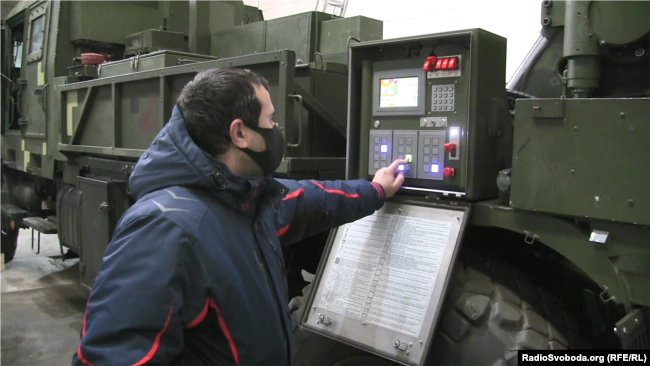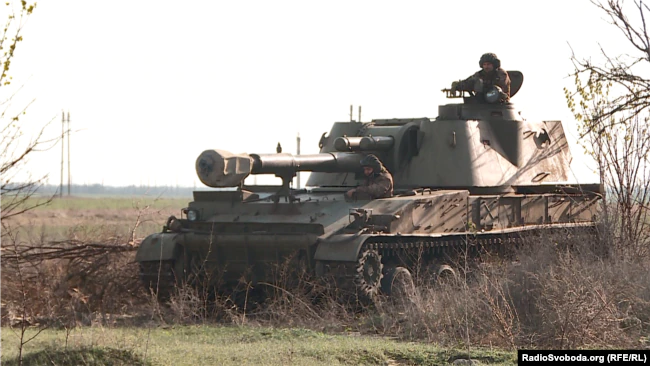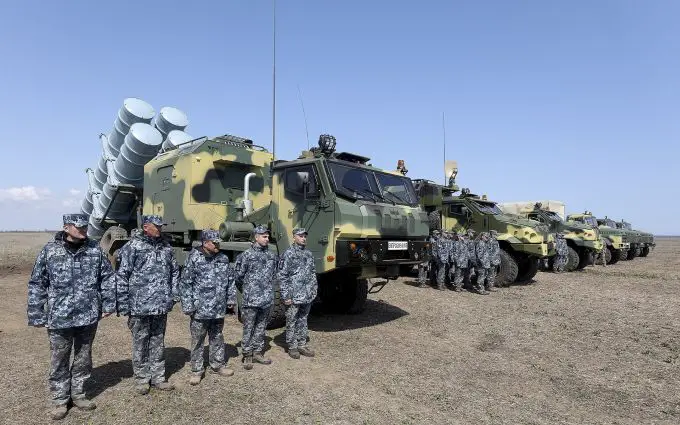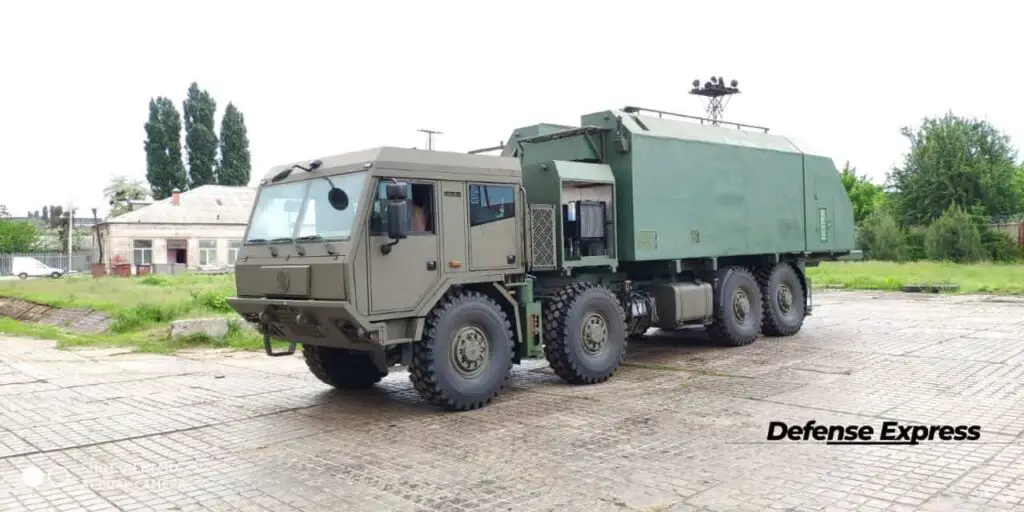By the year-end, Ukraine is expediting the deployment of two of its homegrown systems 2S22 Bohdana and the R-360 Neptun missile system.
155-mm 2S22 Bohdana self-propelled howitzer
The new Ukrainian NATO standard self-propelled artillery mount “Bohdana” with 155 mm calibre has completed preliminary firing tests. The test results show that the Bogdana self-propelled gun can be put into service this year, according to the Ukrainian press.
The latest preliminary tests of the Bohdana self-propelled guns took place at the Alibey training ground of the Ministry of Defense of Ukraine in the Odesa region. From December 12, 2021, to January 25, 2022, the howitzer fired 450 shells, including at a distance of over 40 km. Ukrainian officials said the official firing range of 40 km declared by the developer had been surpassed, and the self-propelled guns could fire a conventional projectile at 42 km. 2S22 Bohdana is developed and manufactured by PJSC Kramatorsk Heavy Machine Tool Plant (KZVV).

Ukraine tested the gun with 155 mm calibre shells from the Czech Republic and Turkey. The preliminary tests were carried out as part of the defining departmental tests, which makes it possible to put the Bogdan self-propelled guns into service this year. The latest is the third stage of fire tests of the Bohdana. The first and second took place in 2021. The first stage of preliminary testing of the self-propelled guns took place at the end of spring 2021 after an almost year-long break due to the lack of NATO-caliber shells.
The first prototype of the Bohdana howitzer was revealed on July 14, 2018, and on August 24 of the same year, the self-propelled guns participated in the military parade in honour of the Independence Day of Ukraine.
Earlier, in December 2020, the Ministry of Defense announced the fulfilment of a contract by the Czech company Excalibur Army to supply a large consignment of 155 mm HE ERFB RA/BB very long-range artillery projectiles for testing Bohdana. Turkish MKEK (Makina ve Kimya Endüstrisi Kurumu) had supplied about 150 shells but ended in a lawsuit over specifications.

Ukraine plans to deploy Bohdana to replace artillery systems 2A36 Hyacinth-B, 2A65 Msta-B, 2C19 Msta-C and 2C5 Hyacinth-C as they are based on a wheeled chassis.
2S22 Bohdana features automatic loading, which allows the five-person crew to fire six shells per minute at a distance of 42 km and maximum range and 780 meters in minimum range. It is designed to fire a rocket-assisted projectile (RAP) at 45 to 60 km. Bohdana has an automated guidance system based on Siemens SIPLUS and SIMATIC HM controllers and an automatic shell loader. Bohdana is built on a 6×6 chassis of the KrAZ-6322, and the armoured cabin can store 20 shells. Bohdana is installed with a 7.62 mm gun.
Replacing tracked Howitzers
In early May, the Czech 152-mm self-propelled howitzer Dana-M2 was tested at the Rivne test site by the Armed Forces of Ukraine. The foreign gun passed 18 inspections during the tests, including running and fire tests. The Ministry of Defense is also considering the possibility of purchasing Polish 155-mm Krab anti-aircraft guns with the prospect of establishing the production of domestic self-propelled howitzers on a tracked platform. Ukraine requires 300 units of tracked howitzers. Dana-M2 is meant to replace the Soviet ACS 2C1 “Carnation” and 2C3 “Acacia” in the Armed Forces. SAU 2C3 is one of the main guns of Ukrainian artillerymen. The project’s status is unknown as Dana M2 is an upgrade of the 1970 vintage system. In addition, a 152 mm calibre is not NATO standard.

ACS 2C3 “Acacia” has been in service with the Soviet Army since 1971. The gun fires 3-4 shots per minute with a six-person crew at a maximum range of 20.5 kilometres with RAP. Acacia fires 152 millimetres shell which weighs over 40 kilograms. The rate of fire largely depends on the strength of the hands and the skill of the person who fires the shells.
Dana M2 fires five shells per minute with a crew of 5 at a maximum range of 25.5 kilometres. In the M2 version, a fire control system complements the firing system and the complex in general, and it has its independent power supply. The system also has completely new mounts. Dana is capable of firing Soviet D-20 and Acacia howitzers.
R-360 Neptun system
Ukrainian design office (KB) Luč was awarded funds in December 2021 for the second serial production of its coastal missile system, RK-360MT Neptune, mounted on the Czech Tatra T 815 8 × 8 chassis platform. The first lot is under operational tests in the Ukrainian Navy.
One Neptune unit has 19 vehicles including six USPU-360 launchers (initially, it was on the KrAZ-7634NE 8×8). Each launch vehicle carries four Neptune cruise missiles with a 280-kilometre range.

The R-360 Neptune guided-missile weighs 870 kg, warhead weighs 150 kg and flies at 900 km / h. Missiles can be fired (it is not clear whether from one USPU-360 or within a section) every three to five seconds. Neptune’s warhead is said to be enough to sink a ship with a displacement of up to 5,000 tons.
One division of Neptune carries 72 guided missiles – 24 missiles (6 × 4) are ready for firing, and the rest are on transport vehicles.
It is accompanied by a number of TZM-360 8 × 8 replenishment vehicles, TM-360 6 × 6 transport vehicles, plus one RKP-360 command post. Initially, it was on the KrAZ-6322 chassis. The reason for the change to Tarta is the bankruptcy of the AvtoKrAz and the failure to meet the specs for the Neptune system.

The main sensor of the compartment is the Mineral-U radar on the Tatra chassis.
Mineral-U is a multifunctional coastal radar designed to detect surface targets at 500 to 600 kilometres. It works actively and passively. It is used to detect and classify surface targets and to guide weapons. It will be the primary sensor of the coastal missile complexes RK-360MT Neptune.
The Mineral-U is the land version of Mineral-ME ship radar. The Mineral-ME was intended for the Turkish corvettes of the Ada class and was ordered by the Ukrainian Navy in April. Ukraine will receive the first corvette in 2023, but it is not clear whether it will be equipped with Neptune missiles or Mineral-ME radar.
The first publicly known tests of the R-360 missile took place in January 2018. The solid fuel launcher is adapted from the S-125 anti-aircraft missile. Motor Sičh manufactures the MS-400 jet engine.
The Ukrainian Navy intends to deploy this division on the Black or Azov Seas as early as April.
There is a risk of Russian ground military invasion of Ukraine at present. But if the scenario comes true, Russia’s Black Sea Fleet will most likely launch landing operations in the ports of Mykolaiv and Greater Odesa. The Russians will solve two tasks at once – “cutting off” Ukraine from the Black Sea and partially blocking shipping to Ukraine’s Black Sea ports.
